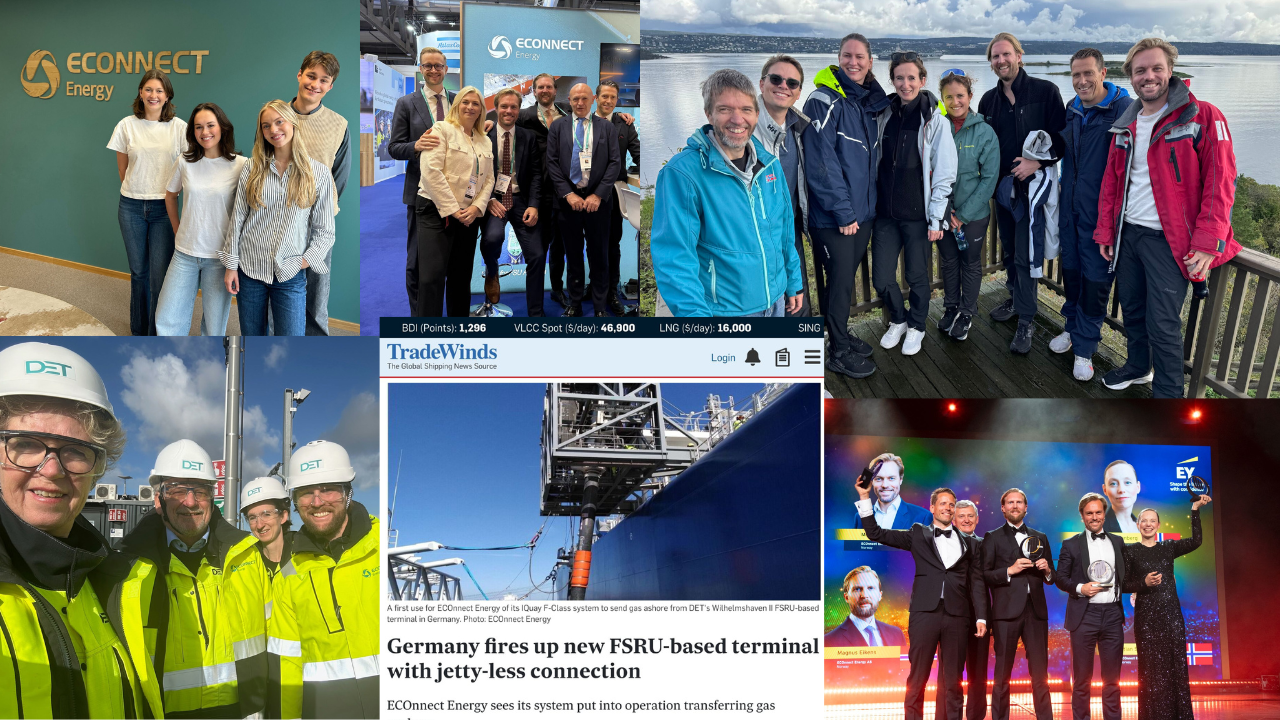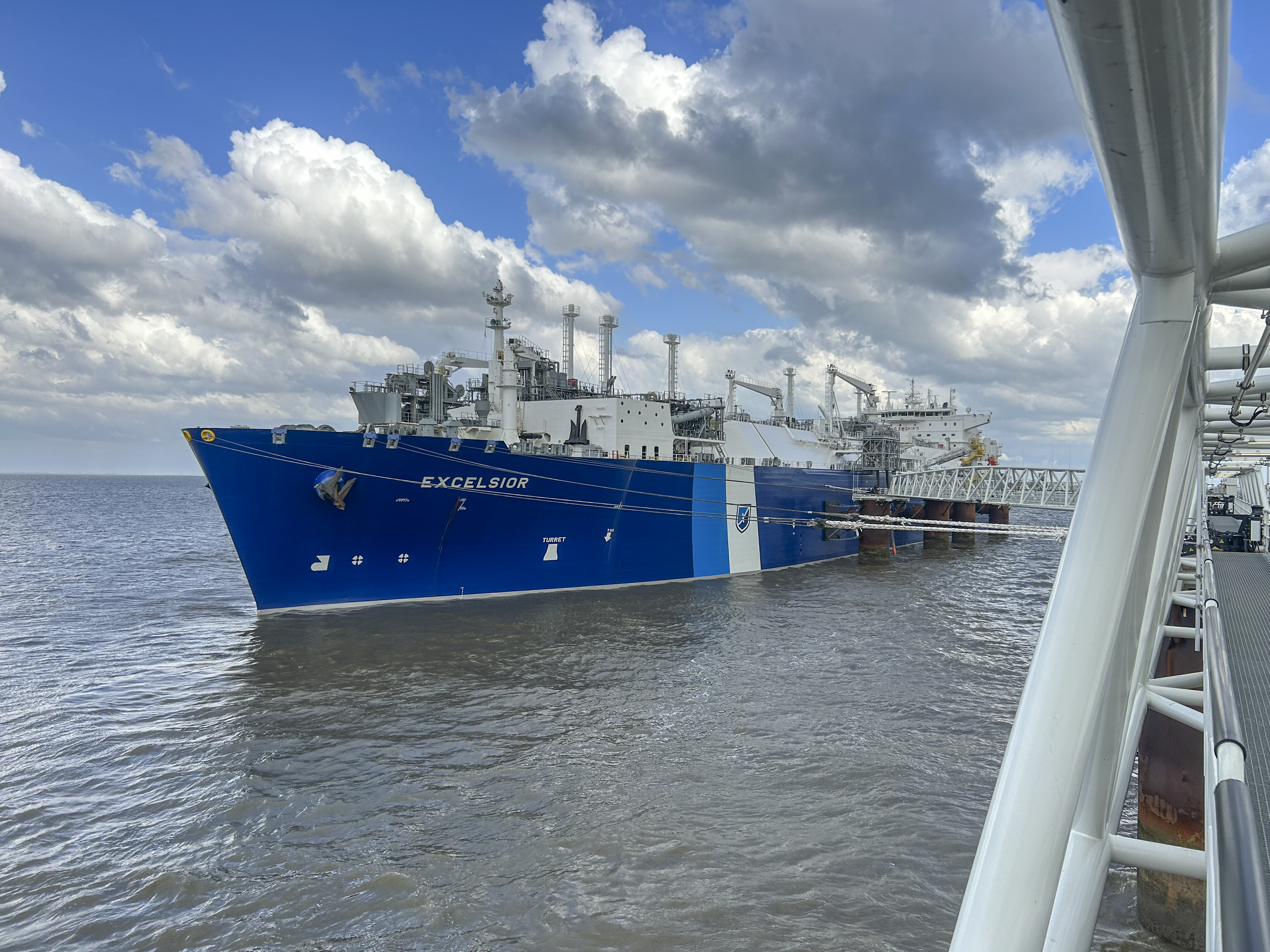EU Gas Import Strategy
In light of the Russian invasion of Ukraine and the subsequent re-evaluation of energy policy throughout the EU, the European Union’s Energy Minister Kadri Simson stated that “we cannot let any third country destabilize our energy markets or influence our energy choices,” signalling a change in EU’s gas import strategy.
As the EU pivots away from Russian gas dependence and with uncertainty around commitments to bring the Nord Stream 2 project online, the EU is developing a new strategy to establish greater energy independence.
This strategy focuses on diversifying gas supplies to the EU in the short term, while also increasing renewable energy developments and energy efficiency, consistent with the EU’s commitment to carbon neutrality by 2050.
A significant part of this strategy is to import liquefied natural gas (LNG) to existing LNG terminals throughout the EU, as well as fast-tracking new LNG terminal development to quickly receive LNG imports from other producers such as the United States, Qatar, Azerbaijan, Norway and Egypt, among others. In Europe, LNG will continue to have significant near-term role in reducing heavy emission coal-fired electricity and in aiding the transition to intermittent renewable sources such as solar and wind.
This article investigates the viability and benefits for the deployment of fast-track floating import terminals as a timely and cost-efficient means to secure greater energy independence in the EU, with particular focus on Germany’s plans to fast-track two LNG terminals and Lithuania’s floating storage and regasification unit (FSRU)purchase in response to the invasion of Ukraine.

Background: EU Gas Imports
Russia has some of the largest natural gas and oil reserves in Europe. A joint academic and industry study lead by Harvard University (2014) investigated the geopolitical implications of Russian dominance in the European gas market. As Russia has tremendous transcontinental gas export infrastructure throughout Eurasia and into Europe, it remains the largest gas exporter with a total of170-200 billion cubic metres (bcm) (about 20% of international gas trade, and40% of total gas export to the European Union) and wields significant influence over EU energy policy.
From a policy perspective, the EU’s ‘European Green Deal’ legislation will no doubt have an impact on LNG consumption in EU member states. In June of 2021, the European Parliament approved a landmark ‘Climate Law’ which imposes legally binding commitments on the 27 EU Member States to reduce net EU emissions by55% by 2030 from 1990 levels.
Notwithstanding, LNG will continue to be key to decarbonization policy in the EU. LNG has a much smaller carbon footprint than heavier fossil fuels and already across Europe, LNG is replacing coal and oil in power-generation, and heavy fuel oil and diesel in freight transport and shipping. LNG is also seen as a natural partner to renewable energy.

EU LNG Import Terminals
There are currently 29 large-scale LNG import terminals in Europe (including non-EU Turkey and the UK) and eight small-scale[1]LNG facilities. Of the 29 large scale LNG import terminals 24 are in EU countries, four are in Turkey, 23 are land-based and four are floating storage and regasification units (FSRU or FSU). These LNG import facilities are distributed along Europe’s coastline, mainly clustered in Northwest and Southwest Europe.
There are additional small-scale LNG regasification facilities in Finland, Gibraltar, Norway and Sweden.
At the start of 2018 the regasification capacity in Europe’s large-scale LNG terminals was 237 bcm, roughly equivalent to 40% of Europe’s total gas demand. Large-scale receiving countries and number of LNG terminals are listed in the below figure.

There remain several large-scale LNG import terminals under consideration or planned throughout Europe, as well as small-scale LNG import projects, half of which represent FSRU terminals.
LNG Import Considerations in the EU: Germany to Act Swiftly
In an effort to isolate the Russian economy, EU member states are taking unprecedented steps to sanction Russian imports and reduce dependency on Russian gas imports. There is renewed political and economic interest in establishing the first LNG import terminals in Germany amid uncertainties around the future of Nord Stream 2 project. Likewise, Russia's invasion of Ukraine has prompted Italy to pause its share of financing for the $21 billion Arctic LNG 2 project led by privately-owned Russian gas producer Novatek, while Chancellor Olaf Scholz announced the construction of two LNG import terminals at Brunsbüttel and Wilhelmshaven.
In context, Germany has committed to stop nuclear power production in 2022 and phase out coal-fired power by 2038, and gas supply from The Netherlands is also due to end in 2022. Even before Russia’s military invasion of Ukraine and the subsequent sanctions placed on Russia by the EU, Germany had been considering building LNG import terminals to reduce reliance on Russian imports, with proposed sites at Brunsbüttel, Wilhelmshaven and Stade.
Most recently, in late February 2022 Uniper reversed its previous decision in November 2020 to suspend plans to install an FSRU-based offshore Wilhelmshaven. The original plans include installing an FSRU with an annual capacity of 9.78 bcm.
Germany’s RWE has committed to a significant portion of the terminal’s regasification capacity, after previously signing an agreement in2020 to develop hydrogen import capacity via the planned LNG terminal at Brunsbüttel.
In February 2021, Hanseatic Energy Hub announced plans for the proposed 8.8 MTPA Stade LNG terminal, shortly thereafter the Belgian outfit Fluxys joined the project as an industrial partner.

Conventional LNG Import Terminal Infrastructure
Development of the LNG and renewable fuel value chain can be complex, and project developers often face several obstacles in their pursuit of realising new, or even modified, import terminals. Assuming a favourable political and regulatory landscape, the biggest challenges are the cost and time associated with the building of energy infrastructure.
The proposed LNG terminal developments in Germany and in other strategic areas throughout the EU focus on offshore capacity. Large-scale and small-scale FSRUs and FSUs have been proven as reliable and flexible solutions, with greater cost optimisation and decreased time-to-market when compared to land-based solutions.

Traditional LNG import terminals feature an offloading jetty, or fixed marine infrastructure connecting pipelines from an onshore terminal out over water, which can take several years to construct. Not only can LNG plants-and regasification facilities be costly, but a jetty alone will require a substantial initial capital expenditure (CAPEX) and operating costs (OPEX)related to personnel operating the jetty during LNG transfer. Costs aside, a jetty project is time consuming, potentially ranging from 3 to 5 years induration with extensive permitting and consultation requirements.

Jettyless LNG Transfer
A Jettyless transfer system is a technology that fast-tracks the jetty part of the project and hence enables safe and efficient transfer of LNG between an LNG carrier and an offshore or onshore LNG terminal without a jetty.
Most of the civil and onshore works associated with jetty or quay construction is eliminated with the jettyless solution because the floating, modular system is prefabricated at a yard.

This system comprises a floating semi-submersible platform and floating or submerged cryogenic pipes accommodating all required and recommended safety systems. The platform attaches to the side of the vessel and transfers LNG or other fluids to storage tanks with floating hoses and is compatible with any vessel sizes due to the unique vacuum attachment system. While not in use, the system is moored close to shore thus limiting the impact on usual navigation routes.
The system is also applicable to a diversity of fluids, so and LNG system is easily adapted for hydrogen, ammonia, or liquid CO2 for carbon capture applications.

Jettyless LNG: The System
The Jettyless LNG terminal is a scalable solution providing flow-rate capacities from 500–10,000cubic metres per hour, offering significant capex and time savings when compared to conventional fixed-jetty solutions.
The system consists of a single adaptable plug-and-play platform, the IQuay, a floating solution which universally connects to any vessel in any port, and flexible cryogenic floating hoses which connect the platform to the onshore terminal.
This field-proven system makes LNG accessible to locations with a lead time of 9-12 months for a new build, with chartering options to suit short-term demand. With a modular system, the Jettyless terminal is flexible to energy demand, and can operate in busy port and harbour areas without needing to build new port infrastructure. Additional benefits include:
- No fixed-jetty structure, platform or mooring dolphin construction and no loading arms required;
- There is no ecosystem interference or impact on the seabed, simplifying the permitting process;
- Dredging requirements are significantly reduced or non-existent as the vessel can be moored with minimal contact to the seabed (or onshore);
- Safety separation of the LNG loading process from shore is possible. The IQuay is unmanned during loading, which adds to a safer operating environment for personnel;
- Ocean operating conditions exceed those for a fixed jetty.
Conclusions
Modular, plug-and-play infrastructure could enable rapid LNG import into strategic European ports. As time is of the essence, field-proven and flexible technology can be rapidly deployed to help Germany, Lithuania, and other European countries establish a stable supply of LNG while- reducing dependence on Russian gas, while also allowing for renewables to take root over the longer term.
This infrastructure is also easily adapted to accommodate liquid diversity; therefore an LNG unit could be adapted for ammonia or hydrogen consistent with the ambitions of Brunsbüttel and other LNG import projects. Floating, jettyless infrastructure can contribute to greater energy security in Europe, regardless of location or existing LNG infrastructure.

[1]Small-scale refers to activities where LNG is unloaded at an import terminal in liquefied form for purposes of bunkering or transport via truck or rail.
References
- European Commission, “Why Europe needs a better interconnected energy infrastructure, ”European Union (2018). Accessed from: https://ec.europa.eu/energy/sites/default/files/documents/ec_dg_energy_pci_handbook.pdf
- Harris Rimmer, Susan and Martus, Ellie, “Will Russia’s invasion of Ukraine push Europe towards energy independence and faster decarbonisation?” The Conversation (25February 2022). Accessed from: https://theconversation.com/will-russias-invasion-of-ukraine-push-europe-towards-energy-independence-and-faster-decarbonisation-177914?utm_campaign=Hot%20News&utm_medium=email&_hsmi=205067307&_hsenc=p2ANqtz-9RVHn33WN7WtgKQnsc0I9pKfYti1hCBjcTIL5-tIDLi8lL5QB_FfiRwnL8PWsp7nak4crz77md9rvANNS1c7x14eGegg&utm_content=205067307&utm_source=hs_email
- Hanseatic Energy Hub announcement, “The energy port in Stade.” Accessed from: https://www.hanseatic-energy-hub.de/en/
- Holl, Michaela and Rosenow, Jan, “How Europe can Rapidly Reduce Its Gas Dependency” Illuminem (01 March 2022). Accessed from: https://illuminem.com/energyvoices/aac870ac-205f-4bbc-857e-662971b8db84
- IEA(2022), “A 10-Point Plan to Reduce the European Union’s Reliance on Russian Natural Gas,” IEA, Paris. Accessed from: https://www.iea.org/reports/a-10-point-plan-to-reduce-the-european-unions-reliance-on-russian-natural-gas
- LNG Prime, “Germany backs construction of two LNG import terminals to cut Russian gas reliance.” (27 February 2022). Accessed from: https://lngprime.com/europe/germany-backs-construction-of-two-lng-import-terminals-to-cut-russian-gas-reliance/43905/
- Mason, Virginia of The National Geographic Society, “Map: Oil and Gas Pipelines from Russia to Europe” National Geographic Society Resource Library. Accessed from: https://www.nationalgeographic.org/photo/europe-map/
- Mitrova, Tatiana. (2014). The Geopolitics of Russian Natural Gas. Accessed from: https://www.researchgate.net/publication/333844509_The_Geopolitics_of_Russian_Natural_Gas
- The National Law Review, “LNG in Europe 2021: Current Trends, The European LNG Landscape and Country Focus.” (23 August 2021). Accessed from: https://www.natlawreview.com/article/lng-europe-2021-current-trends-european-lng-landscape-and-country-focus
- The Economist, “European energy security: Conscious uncoupling” (05 April 2014).Accessed from: https://www.economist.com/briefing/2014/04/03/conscious-uncoupling
- Reuters,“Uniper reviews Wilhelmshaven LNG terminal on market uncertainty.” (06 November2020). Accessed from: https://www.reuters.com/article/us-uniper-lng-germany-idUSKBN27M0Y5
- Statista, “Europe is Highly Dependent on Russian Gas” Accessed from: https://www.statista.com/chart/2485/europe-is-highly-dependent-on-russian-gas/
- Weissman, Steve, “Natural Gas as a Bridge Fuel: Measuring the Bridge.” Center for Sustainable Energy (2016).Accessed from: https://energycenter.org/sites/default/files/docs/nav/policy/research-and-reports/Natural_Gas_Bridge_Fuel.pdf

.webp)






